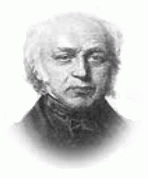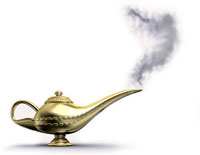It’s a norm for Homeopaths to instruct their clients to shake the prescribed remedy, in liquid form, before each use. However, in this regard Dr. Boenninghausen has shared an important observation. His observation is in respect to the enormous and fatal effects of the high potencies when the dynamization is much increased by excessive shaking with water.
 Dr. Boenninghausen: “I came to this knowledge in the following manner. In the second half of last winter there were an unusual number of cases of hydrophobia (extreme fear of water, as a symptom of rabies) among the dogs, and even at present hardly a day passes without my services being called for to aid some person bitten. Homoeopathy and high potencies have proved their worth. I have used only two or three pellets of the 200th potency dissolved in water for a dose this year, but neither this nor the preceding years have I ever heard that any man or animal treated in this manner by me was seized with hydrophobia. Nevertheless in the last eleven days I have had two deaths of dogs.
Dr. Boenninghausen: “I came to this knowledge in the following manner. In the second half of last winter there were an unusual number of cases of hydrophobia (extreme fear of water, as a symptom of rabies) among the dogs, and even at present hardly a day passes without my services being called for to aid some person bitten. Homoeopathy and high potencies have proved their worth. I have used only two or three pellets of the 200th potency dissolved in water for a dose this year, but neither this nor the preceding years have I ever heard that any man or animal treated in this manner by me was seized with hydrophobia. Nevertheless in the last eleven days I have had two deaths of dogs.
The first case was that of a large fine bull-dog that had been bitten by a dog which proved to be mad. As usual I gave the owner, who valued the dog highly, a number of powders, Belladonna, Hyoscyamus, and Stramonium all of the 200th potency, to be given every three days in their proper order, one powder dissolved in water by shaking, which could best be effected in a small bottle. This man was too keen in well-doing, as I afterwards found out, and he shook up the powder every time most vigorously for five minutes and over, and then he gave it to the dog with boiled sweet milk which had been allowed to cool off. After each one of these powders the dog had looked very doleful for a whole day; after the last he would not eat any more, though still willing to drink water. On the third day after taking the fifth powder he died, but without showing the least sign of madness or hydrophobia.
About two weeks later I gave the same remedies, to be taken in the same manner, to a large mastiff in the village, and as if by a providential decree, to impress the lesson taught by the former example, also in this case the shaking of the medicine in water was carried to excess. In consequence the result was just the same. After the last powder the dog was taken very sick and as he was near dying. On the second day they ended his pains with a bullet. Also this dog did not show any symptom of madness before his death.
It is to be noted that I have given the same remedy in the same dose and the same manner to quite a number of animals of various kinds, horses, cows, hogs and little dogs, as also to some men who had been bitten, without producing any noticeable trouble; nor did hydrophobia appear with any one of them. But so far as I know and can find out by inquiry, in none of those cases had the potentizing been increased by an excess of shaking, as in the two cases given above.
Though we have here two facts, they stand as yet too isolated to derive certain conclusions, and I fully see that there are many ways of escaping from the deduction. Still these phenomena seem to me of sufficient importance to call attention to them and cause us to give attention to this matter. If others of my honored colleagues should have heard of similar cases, or can communicate other facts which show that my apprehensions as to the effect of too violent potentizing are baseless, I may well request them for the good of our science to communicate them.
It seems to consider the conclusions as very uncertain as yet. And they are so, indeed, for they stand solitary among thousands of observations that have been made; aggravations caused by medicines have indeed been frequently observed, but none of a dangerous nature, on the contrary they were usually welcome as the harbingers of improvement.
The danger in these cases could, therefore, only have arisen from the collision of the medicinal force with the disease still latent. It may easily be seen that it depends entirely on the interpretation given to the observations; they may be used either to prove the excessive strength of the violently shaken high potencies, or, on the contrary, they may be viewed as proving that the remedies in these cases were unable to protect.
It would be a great pity if high potencies could by strong shaking be rendered so dangerous, still we would not hesitate to acknowledge this if the reasons were convincing.”
Dr. Boenninghausen’s concern is valid as homeopathic medicines are dynamically energized and thus prolonged shaking of the medicine may create an adverse effect. Although it is a good procedure to shake the liquid remedy bottle before each use to rouse it up, however we must keep in mind that excess shaking can potentially create an unwelcomed effect just like a surplus in an electrical current. Thus I urge my fellow homeopaths to pay further attention to this sensitive step in patient-care.







Nice article…may explain why some clients do better with remedies dry, and others in water succussed. Certainly I have seen equal aggravations in both cases, so perhaps some folks are more sensitive to “violently shaken” remedies than others…thank you for bringing this observation of Boenninghausen to our awareness.
It would be inappropriate to talk about number of succussions if we don’t take into account the time taken to carry out those succussions. Large number of succussions in very less amount of time is inappropriate.
My experience is exctly the opposite.I hope others will also share.
sajjad.
DEAR DR.
I HAVE READ THATMOST OF DRS PRESCRIBE SUCCUSSIONS 30 TIMES BUT MANUFACTURER SUCCUSS 10 TIMES FOR REACHING ONE HIGHER POTENCY WITH MINUS 9 OUT OF 10 OR MINUS 99 OUT 100 QUANTITY OF REMEDY AND ADDING FRESH ALCHOL 9 TIMES OR99 TIMES TO IT AS THE CASE MAY BE. I THINK IF WE SUCCUSS 4 OR 5 TIMES THE SAME REMEDY WITHOUT CHANGING WATER ON EACH DOSE IS ENOUGH. HAHANEMANN APPROVES SUCCUSSION BUT DOES NOT MENTION NUMBER.
REGARDS
DR SHEKHAR
I usually recommend 5-10 succussions at most. Have not had much aggravation in those cases. Number of pellets (or drops in LM’s) and ounces of water are also to be considered. Slowing them down makes sense to be effective yet not violent.
For me the reaction to a (shaken) remedy is always different from what I have seen in other patients. I am a solid ‘shaker’ of the remedies and in the centre in Africa where I practice (www.evademaya.nl) the homeopaths hardly shake: they just put some drops from the stockbottle into the patient’s bottle. Both procedures work. The potency is a miracle. It is just energy. We can’t see it, we just enjoy it. It is something like love. Have a nice day.
Probably all opinions are correct according to personal practice, though it is difficult to see a definite law here. Some researches point to electronically or chemically examine succussed preparations to distinguish between more or less succussed ones. That might be a way. I also read somewhere number of succussions is limited to the dimensions of the bottle, i.e. after a certain number of succussions no more could be added to their “energy” even if keeping shaking bottles for a longer time.
Dear Dr Iman,
Are there teaching materials that you (or your associates) use to demonstrate how to succuss the remedy? Are written materials given to patients? Is there an appropriately done u-tube video for patients to watch? Or do you rely on your verbal instructions? Do you ask patients to demonstrate to you what you are asking them to do…before they are sent on their way? Some of the problems may be minimized if patients are taught the procedure & then are given a chance to do a return demo to verify their understanding. Another factor which effects the force of succession is the level of anxiety the person has who is doing it. This potential problem can be discussed when the procedure is being taught. Thank you for your consideration of these ideas!
Dear Colleagues,
Thank you ALL so very much for your valuable input and kind feedback.
Certainly, homeopathy is an organized system, thus as much as possible we should avoid following “opinions”, although I’m not discounting the importance of clinical experiences, however we should always consider the standard procedures as prescribed in the Homeopathic Pharmacopoeias, such as Homeopathic Pharmacopoeia of India, Homeopathic Pharmacopoeia of U.S., and Homeopathic Pharmacopoeia of Europe.
I also would like to invite you to visit the facebook page of Homeopathic Pharmacopiea.
With best regards!
Respectfully,
Iman Navab
I recommend searching youtube for the Five Cup Method used by Dr. Farokh Master, to give further thought, particularly useful in the highly sensitive patient or in skin diseases or other conditions where the centesimal dlution can severly aggravate. I give the link here: https://www.youtube.com/watch?v=P7w72Zxv5pc&t=50s